Volume 9-14 (2020-26)
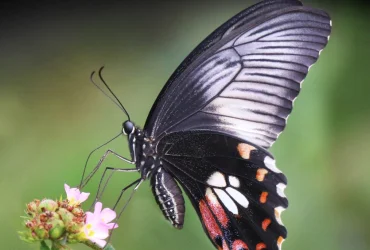 v10i2.261
v10i2.261ISSN: 1800-427X (printed)
eISSN: 1800-427X (online)
DOI:10.47605/tapro.v10i2.261
Submitted date: 8 June 2021
Accepted date: 26 October 2021
Published date: 22 November 2021
Pp. 126
An unusual body colouration of Ceylon roughside snake (Aspidura ceylonensis)
D. Kandambi, N. Abeyrathna, D.S. De Silva & S. Karunarathna*
*E-mail: suranjan.karu@gmail.com
The small sized, non-venomous, and fossorial colubrid snake genus Aspidura Wagler, 1830 is endemic to Sri Lanka. Aspidura ceylonensis (Günther, 1858) is rare and restricted to mid-elevation to montane and sub-montane forests at elevation of 500–1300 m a.s.l. in the Central Highlands and the Knuckles massif. It is found in cool and well-shaded forest areas, with thick moist leaflitter, woody debris, and loose soil. The usual adult body coloration on dorsum is dark reddish or dark orange, rarely yellowish, with a continuous black vertebral line and two rows of dorsolateral black spots along the body.
Section Editor: Thasun Amarasinghe
eISSN: 1800-427X (online)
DOI:10.47605/tapro.v10i2.261
Submitted date: 8 June 2021
Accepted date: 26 October 2021
Published date: 22 November 2021
Pp. 126
An unusual body colouration of Ceylon roughside snake (Aspidura ceylonensis)
D. Kandambi, N. Abeyrathna, D.S. De Silva & S. Karunarathna*
*E-mail: suranjan.karu@gmail.com
The small sized, non-venomous, and fossorial colubrid snake genus Aspidura Wagler, 1830 is endemic to Sri Lanka. Aspidura ceylonensis (Günther, 1858) is rare and restricted to mid-elevation to montane and sub-montane forests at elevation of 500–1300 m a.s.l. in the Central Highlands and the Knuckles massif. It is found in cool and well-shaded forest areas, with thick moist leaflitter, woody debris, and loose soil. The usual adult body coloration on dorsum is dark reddish or dark orange, rarely yellowish, with a continuous black vertebral line and two rows of dorsolateral black spots along the body.
Section Editor: Thasun Amarasinghe
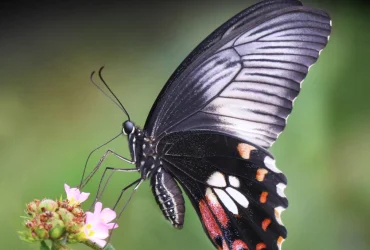 v10i2.260
v10i2.260ISSN: 1800-427X (printed)
eISSN: 1800-427X (online)
DOI:10.47605/tapro.v10i2.260
Submitted date: 5 August 2021
Accepted date: 9 September 2021
Published date: 22 November 2021
Pp. 124–125, pl. 27.
First report of the cuckoo wasp Chrysidea falsa (Hymenoptera) from India
P.G. Aswathi & C. Bijoy*
*E-mail: drbijoyc@gmail.com
Only two species of Chrysidea Bischoff, 1913 have been reported from India: C. furiosa (Cameron, 1897) from West Bengal and C. pumila (Klug, 1845) from Maharashtra. Here, we report the first record of a third species, C. falsa Rosa & Xu, 2015 from India, previously recorded only from China, Malaysia, and the Philippines, and thereby extending the known range of this species. We randomly collected chrysidids from Kasaragod and Calicut Districts in Kerala, which lies in the south-western part of India. Six specimens of C. falsa were collected using sweep nets. Five of them were from two sacred groves in Kasaragod District, Edayilakkad Kavu and Koyithatta Sree Dharma Shastha Kavu. One specimen was collected at Vadakara, Calicut District. The specimens from Kasaragod and Vadakara were found in small rock crevices and on the brick walls of an old abandoned house respectively.
Section Editor: Michael S. Engel
eISSN: 1800-427X (online)
DOI:10.47605/tapro.v10i2.260
Submitted date: 5 August 2021
Accepted date: 9 September 2021
Published date: 22 November 2021
Pp. 124–125, pl. 27.
First report of the cuckoo wasp Chrysidea falsa (Hymenoptera) from India
P.G. Aswathi & C. Bijoy*
*E-mail: drbijoyc@gmail.com
Only two species of Chrysidea Bischoff, 1913 have been reported from India: C. furiosa (Cameron, 1897) from West Bengal and C. pumila (Klug, 1845) from Maharashtra. Here, we report the first record of a third species, C. falsa Rosa & Xu, 2015 from India, previously recorded only from China, Malaysia, and the Philippines, and thereby extending the known range of this species. We randomly collected chrysidids from Kasaragod and Calicut Districts in Kerala, which lies in the south-western part of India. Six specimens of C. falsa were collected using sweep nets. Five of them were from two sacred groves in Kasaragod District, Edayilakkad Kavu and Koyithatta Sree Dharma Shastha Kavu. One specimen was collected at Vadakara, Calicut District. The specimens from Kasaragod and Vadakara were found in small rock crevices and on the brick walls of an old abandoned house respectively.
Section Editor: Michael S. Engel
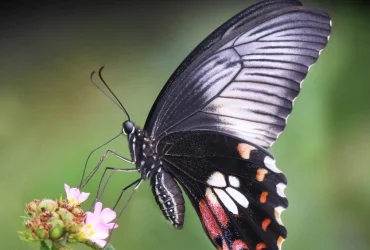 v10i2.259
v10i2.259ISSN: 1800-427X (printed)
eISSN: 1800-427X (online)
DOI:10.47605/tapro.v10i2.259
Submitted date: 9 May 2021
Accepted date: 7 November 2021
Published date: 22 November 2021
Pp. 123, pl. 26.
Slate-red tarantula (Poecilotheria rufilata) in the Western Ghats, India
K. Sunil Jose*
*E-mail: sunil.jose@devamatha.ac.in
The Slate-red tree spider (or tarantula), Poecilotheria rufilata Pocock, 1899 is an extremely rare, endemic, little known tarantula described based on a female specimen from Thiruvananthapuram Kerala, India. This arboreal tree spider is mostly found in dead red pine, jack fruit, and white pine trees and recorded from Agasthyamala Biosphere Reserve, Peppara Dam, Kallar, and Ponmudi areas between 900–1200 m elevations in Kerala. It is morphologically similar to P. ornata Pocock, 1899, which is distributed in Sri Lanka.
Section Editor: Zeeshan A. Mirza
eISSN: 1800-427X (online)
DOI:10.47605/tapro.v10i2.259
Submitted date: 9 May 2021
Accepted date: 7 November 2021
Published date: 22 November 2021
Pp. 123, pl. 26.
Slate-red tarantula (Poecilotheria rufilata) in the Western Ghats, India
K. Sunil Jose*
*E-mail: sunil.jose@devamatha.ac.in
The Slate-red tree spider (or tarantula), Poecilotheria rufilata Pocock, 1899 is an extremely rare, endemic, little known tarantula described based on a female specimen from Thiruvananthapuram Kerala, India. This arboreal tree spider is mostly found in dead red pine, jack fruit, and white pine trees and recorded from Agasthyamala Biosphere Reserve, Peppara Dam, Kallar, and Ponmudi areas between 900–1200 m elevations in Kerala. It is morphologically similar to P. ornata Pocock, 1899, which is distributed in Sri Lanka.
Section Editor: Zeeshan A. Mirza
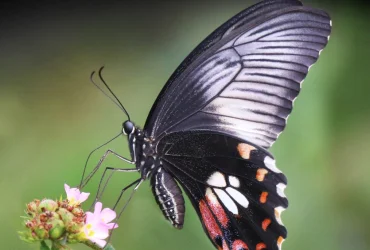 v10i2.258
v10i2.258ISSN: 1800-427X (printed)
eISSN: 1800-427X (online)
DOI:10.47605/tapro.v10i2.258
Submitted date: 7 June 2021
Accepted date: 17 September 2021
Published date: 22 November 2021
Pp. 121–122
A freshwater crab (Barytelphusa sp.) feeding on a catfish (Pterocryptis sp.)
Y. Kalki*
*E-mail: yatin.kalki@gmail.com
The freshwater crab, Barytelphusa cunicularis (Westwood, 1836), is a common and widespread crustacean species inhabiting freshwater streams throughout India except the northeast. It is an omnivore that feeds on small crustaceans, gastropods, insects and aquatic vegetation. This species is commonly collected as a food commodity and is also often reared in captivity for the same purpose. In captivity, these crabs seem to prefer animal-based food and are generally fed about 10% of their total biomass in prawn and rice flakes daily. Observations of B. cunicularis feeding in nature are scant in the literature, and to the best of my knowledge there have not been any reports of the species feeding on fish. Herein I report the first observation of B. cunicularis feeding on a Malabar silurus, Pterocryptis wynaadensis, a type of catfish.
Section Editor: Lee Harding
eISSN: 1800-427X (online)
DOI:10.47605/tapro.v10i2.258
Submitted date: 7 June 2021
Accepted date: 17 September 2021
Published date: 22 November 2021
Pp. 121–122
A freshwater crab (Barytelphusa sp.) feeding on a catfish (Pterocryptis sp.)
Y. Kalki*
*E-mail: yatin.kalki@gmail.com
The freshwater crab, Barytelphusa cunicularis (Westwood, 1836), is a common and widespread crustacean species inhabiting freshwater streams throughout India except the northeast. It is an omnivore that feeds on small crustaceans, gastropods, insects and aquatic vegetation. This species is commonly collected as a food commodity and is also often reared in captivity for the same purpose. In captivity, these crabs seem to prefer animal-based food and are generally fed about 10% of their total biomass in prawn and rice flakes daily. Observations of B. cunicularis feeding in nature are scant in the literature, and to the best of my knowledge there have not been any reports of the species feeding on fish. Herein I report the first observation of B. cunicularis feeding on a Malabar silurus, Pterocryptis wynaadensis, a type of catfish.
Section Editor: Lee Harding
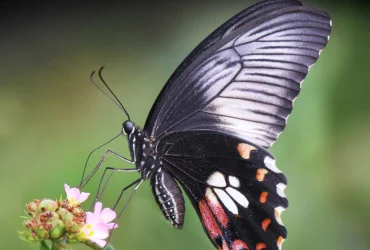 v10i2.257
v10i2.257ISSN: 1800-427X (printed)
eISSN: 1800-427X (online)
DOI:10.47605/tapro.v10i2.257
Submitted date: 19 September 2021
Accepted date: 6 November 2021
Published date: 22 November 2021
Pp. 89–120, pls. 18–25.
TAXONOMIC COMPOSITION OF THE Rhabdophis subminiatus (SCHLEGEL, 1837) SPECIES COMPLEX (REPTILIA: NATRICIDAE) WITH THE DESCRIPTION OF A NEW SPECIES FROM CHINA
Patrick David & Gernot Vogel*
*Corresponding author. E-mail: gernot.vogel@t-online.de
Abstract
The systematics of Rhabdophis subminiatus (Schlegel, 1837) at subspecies level has long proved to be controversial. We analyse the variation of selected morphological characters in 179 specimens from populations covering the whole range of R. subminiatus sensu lato. Based on this review, we recognize four morphological groups, of which two do not agree with the current definitions and distributions of the currently recognized subspecies R. s. subminiatus. The “northernmost group” agrees with the definition of Natrix helleri Schmidt, 1925. In contrast, the “southernmost group” agrees with the syntypes of Tropidonotus subminiatus and we here restrict this species to the Sunda Region. We also discuss a previous designation of the lectotype of T. subminiatus, which we consider invalid, and we here make it valid in the sense of the Code. Furthermore, our analysis allows us to define a third group that is widespread in the Indochinese Region and Malayan Peninsula. For this geographically “central group”, the name Natrix subminiata siamensis Mell, 1931, is available. We therefore resurrect this taxon from its synonymy with R. subminiatus and we designate a lectotype in agreement with requirements of the Code. Lastly, we recognize a fourth group at species level, endemic to Hainan Island, China, that we describe as a new species. This division into four morphological groups at species level is coherent with phylogenetic analyses recently published in the literature. We also discuss and modify the taxonomic status of Natrix subminiata hongkongensis Mell, 1931 and Natrix (Rhabdophis) laobaoensis Bourret, 1934, now regarded as synonyms of R. subminiatus and R. siamensis, respectively.
Key words : Asia, Hainan, lectotype, morphological variation, Natricidae, Natrix, Serpentes, taxonomy
Section Editor: Thasun Amarasinghe
LSID:urn:lsid:zoobank.org
eISSN: 1800-427X (online)
DOI:10.47605/tapro.v10i2.257
Submitted date: 19 September 2021
Accepted date: 6 November 2021
Published date: 22 November 2021
Pp. 89–120, pls. 18–25.
TAXONOMIC COMPOSITION OF THE Rhabdophis subminiatus (SCHLEGEL, 1837) SPECIES COMPLEX (REPTILIA: NATRICIDAE) WITH THE DESCRIPTION OF A NEW SPECIES FROM CHINA
Patrick David & Gernot Vogel*
*Corresponding author. E-mail: gernot.vogel@t-online.de
Abstract
The systematics of Rhabdophis subminiatus (Schlegel, 1837) at subspecies level has long proved to be controversial. We analyse the variation of selected morphological characters in 179 specimens from populations covering the whole range of R. subminiatus sensu lato. Based on this review, we recognize four morphological groups, of which two do not agree with the current definitions and distributions of the currently recognized subspecies R. s. subminiatus. The “northernmost group” agrees with the definition of Natrix helleri Schmidt, 1925. In contrast, the “southernmost group” agrees with the syntypes of Tropidonotus subminiatus and we here restrict this species to the Sunda Region. We also discuss a previous designation of the lectotype of T. subminiatus, which we consider invalid, and we here make it valid in the sense of the Code. Furthermore, our analysis allows us to define a third group that is widespread in the Indochinese Region and Malayan Peninsula. For this geographically “central group”, the name Natrix subminiata siamensis Mell, 1931, is available. We therefore resurrect this taxon from its synonymy with R. subminiatus and we designate a lectotype in agreement with requirements of the Code. Lastly, we recognize a fourth group at species level, endemic to Hainan Island, China, that we describe as a new species. This division into four morphological groups at species level is coherent with phylogenetic analyses recently published in the literature. We also discuss and modify the taxonomic status of Natrix subminiata hongkongensis Mell, 1931 and Natrix (Rhabdophis) laobaoensis Bourret, 1934, now regarded as synonyms of R. subminiatus and R. siamensis, respectively.
Key words : Asia, Hainan, lectotype, morphological variation, Natricidae, Natrix, Serpentes, taxonomy
Section Editor: Thasun Amarasinghe
LSID:urn:lsid:zoobank.org
Hubungi Kami
The ultimate aim of the journal is to provide an effective medium for communication of the latest and best scientific information.
Copyright © 2020 Taprobanica. All Rights Reserved
Jasa Pembuatan Website by IKT




